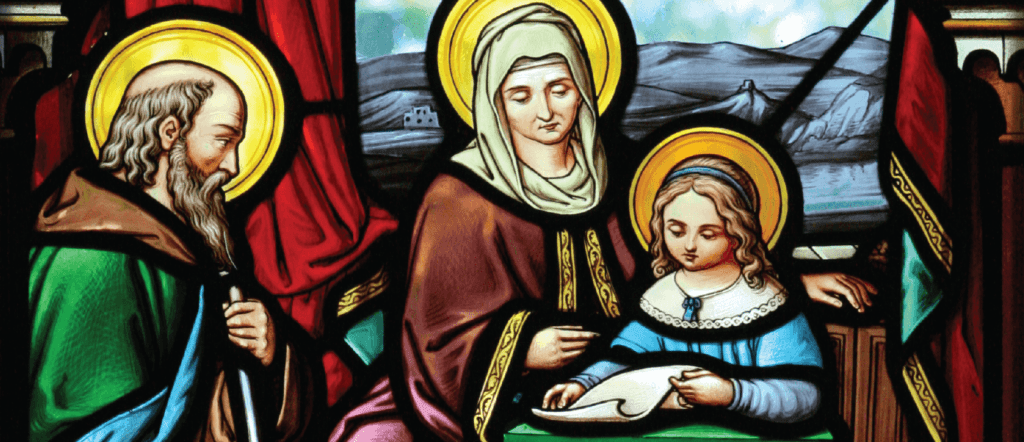Information concerning their lives and names is found in the 2nd-century Protevangelium of James (“First Gospel of James”) and the 3rd-century Evangelium de nativitate Mariae (“Gospel of the Nativity of Mary”). According to these non-canonical sources, Anne (Hebrew: Ḥannah) was born in Bethlehem in Judaea. She married Joachim, and, although they shared a wealthy and devout life at Nazareth, they eventually lamented their childlessness. Joachim, reproached at the Temple for his sterility, retreated into the countryside to pray, while Anne, grieved by his disappearance and by her barrenness, solemnly promised God that, if given a child, she would dedicate it to the Lord’s service. Both received the vision of an angel, who announced that Anne would conceive and bear a most wondrous child. The couple rejoiced at the birth of their daughter, whom Anne named Mary. When the child was three years old, Joachim and Anne, in fulfilment of her divine promise, brought Mary to the Temple of Jerusalem, where they left her to be brought up.
In the Eastern church, the cult of Anne herself may go back as far as c. 550, when Justinian built a church in Constantinople in her honor. The earliest sign of her veneration in the West is an 8th-century fresco in the church of Santa Maria Antiqua, Rome. A shrine at Douai, in northern France, was one of the early centres of devotion to St. Anne.
Two well-known shrines to St. Anne are that of Ste. Anne d’Auray in Brittany, France; and that of Ste. Anne de Beaupré near the city of Québec. The number of visitors to the Basilica of St. Anne de Beaupré is greatest on St Anne’s Feast Day, July 26, and the Sunday before Nativity of the Virgin Mary, September 8. In 1892, Pope Leo XIII sent a relic of St Anne to the church.
Saint Anne is patroness of unmarried women, housewives, women in labor, grandmothers, horseback riders, cabinet-makers, and the Mi’kmaq of Canada. As the mother of Mary, the devotion to Saint Anne as the patron of miners arises from the medieval comparison between Mary and Christ and the precious metals silver and gold. Anne’s womb was considered the source from which these precious metals were mined. Saint Anne is also said to be a patron saint of sailors and a protector from storms.


